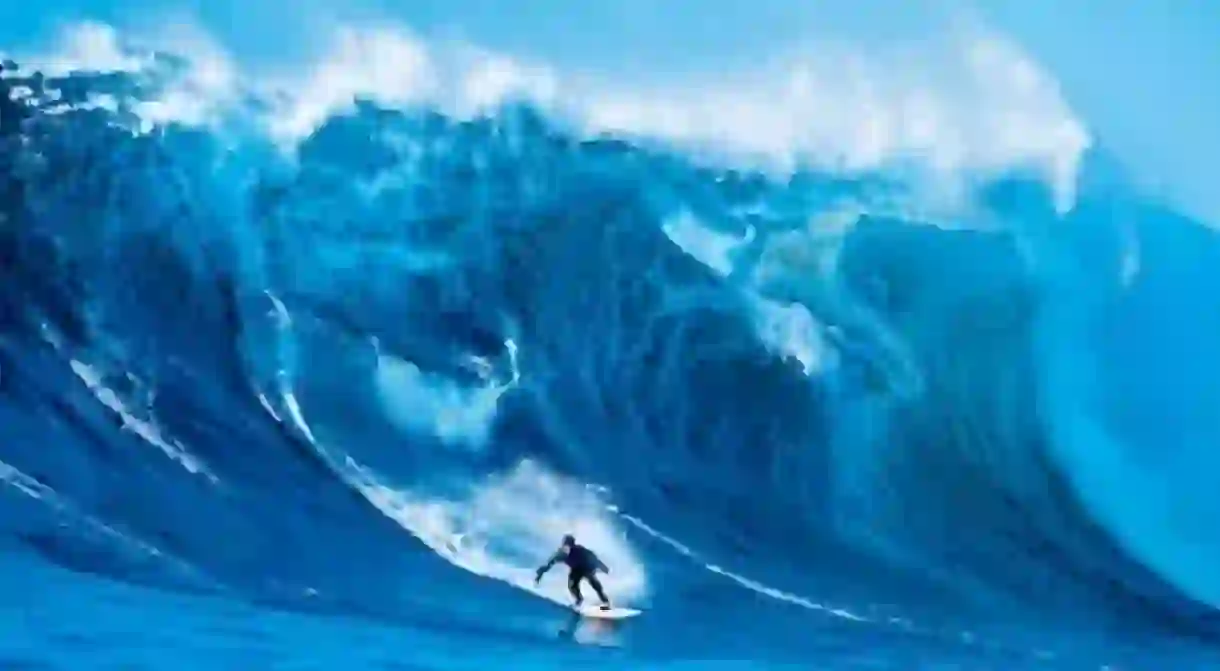All Over La Jolla, and Waimea Bay: Surfin' USA

Kate Gliven explores how surfing and surf culture have developed from a counter-cultural regional recreation into its present form, today serving as one of the most popular sea sports in existence, attracting professionals from across the world.

Originally an ancient Polynesian tradition that was nearly eliminated by European missionaries in the 19th century, surfing was popularised as a sport in the Californian counter-culture of the 50s and 60s before finally coming of age in its spiritual home of Hawaii during the 1970s when the first major competitions attracted a new breed of progressive international surfers.
Far from the continental states of America, the volcanic archipelago of Hawaii – a chain of eight main islands – resides within the Polynesian group of the Pacific Ocean. Since its annexation and establishment of its statehood in 1959, Hawaii promised Americans a share in its exotic culture and an easily attainable tropical lifestyle. With the eminence of its beaches and favourable climate, Hawaiian resorts such as Waikiki quickly became entrenched within the tourist industry. Whilst the glossy aesthetic of American tourism has often been said to overshadow the indigenous way of life on the islands, there are instances in the state’s history where the mêlée of cultures has produced something that is dependent on both. One of those moments is the development of surfing into a professional sport, as put across in the 2008 documentary film, Bustin’ Down The Door, adapted from pro-surfer Shaun Tomson’s book of the same name.

Developed from a spiritual art of wave-riding, surfing in Hawaii captivated its audience of American tourists throughout the twentieth century. Bustin’ Down The Door charts how a group of young, émigré waveriders from Australia and South Africa began to forsake the showy glamour of Waikiki and Honolulu for the North Shore of O’ahu island, bringing renown to the now-famous surf spots of Waimea Bay, Sunset Beach and Banzai Pipeline. These Free Ride revolutionaries triumphed in the first invitational competitions of the 1970s, transforming a leisure pastime into a professional sport. These areas of Hawaii with their world class waves would develop into the hosts of professional events, including the Pipeline Masters that serves as the focal point of teen surfing drama, Blue Crush (2002).

Yet, along with the successes of pro-surfing’s ambitious pioneers came the difficulties created by the clash of their youthful bravado in ego-led marketing campaigns with the more demure Hawaiian culture. When a young Australian surfer named Wayne ‘Rabbit’ Bartholomew declared his intentions to revolutionise and modernise the sport in a 1976 edition of Surfer Magazine, his article angered many people who perceived it as culturally insensitive towards Hawaiians. The issue was only resolved when well-respected Hawaiian lifeguard and surfer Eddie Aikau took it upon himself to even out local grievances by organising a ho’oponopono, an ancient Hawaiian practice of communal reconciliation, at the Kuilima Hotel.
Surfing documentaries are one medium through which surf culture has defined itself and charted its evolving history as both a sport and an art form. The narrative of documentaries such as Bustin’ Down The Door (2008) suggests that now in the professional era, the surfing federation strives to act with consideration for Hawaiian culture, responding reciprocally to the warm kindness of the Aloha spirit.
By Kate Gliven













